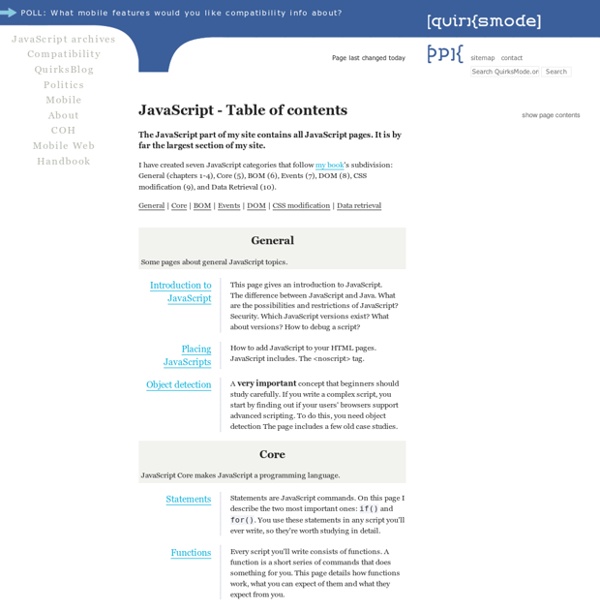



Leaflet - a modern, lightweight JavaScript library for interactive maps by CloudMade Curso en JavaScript - 1. Introducción Curso de Javascript | Versión 4.0 Por Víctor M. Rivas Santos 1.1 ¿Qué es Javascript? JavaScript es un lenguaje interpretado, al igual que VisualBasic, Perl, TCL... (ahora está de moda decir que son lenguajes de script :-|) sin embargo, posee una característica que lo hace especialmente idóneo para trabajar en Web, ya que son los navegadores que utilizamos para viajar por ella los que interpretan (y por tanto ejecutan) los programas escritos en JavaScript. Los programas en JavaScript no son la primera forma que conoce la Web para transformar información, dado que el uso de CGIs está ampliamente difundido. Cargar la página del formularioEnviar los datos al servidor, y Recibir la nueva página que ha generado el CGI. Por el contrario, los programas escritos en JavaScript se ejecutan en el navegador del cliente, sin necesidad de que intervenga el servidor. Por último, es necesario resaltar que hay dos tipos de JavaScript. 1.2 ¿Qué NO es Javascript? 1.3.
The Node Beginner Book Tempo :: The tiny JSON rendering engine by TwigKit Popcorn.js | The HTML5 Video Framework markItUp! 2.0 - A jQuery universal markup editor - Coming when it's done. Learning Javascript with Object Graphs HEADS UP! This article was written for an older version of node. More up-to-date information may be available elsewhere. One of the secrets to being a super effective JavaScript developer is to truly understand the semantics of the language. References Everywhere A variable in JavaScript is simply a label that references a value in memory somewhere. Local Variables In the following example, we will create four local variables in the top-level scope and point them to some primitive values: variables.js // Let's create some local variables in the top scopevar name = "Tim Caswell";var age = 28;var isProgrammer = true;var likesJavaScript = true;// Test to see if the two variables reference the same valueisProgrammer === likesJavaScript; Notice that the two boolean variables point to the same value in memory. In the code snippet we checked to see if the two references pointed to the same value using === and the result was true. The outer box represents the outermost closure scope. objects.js